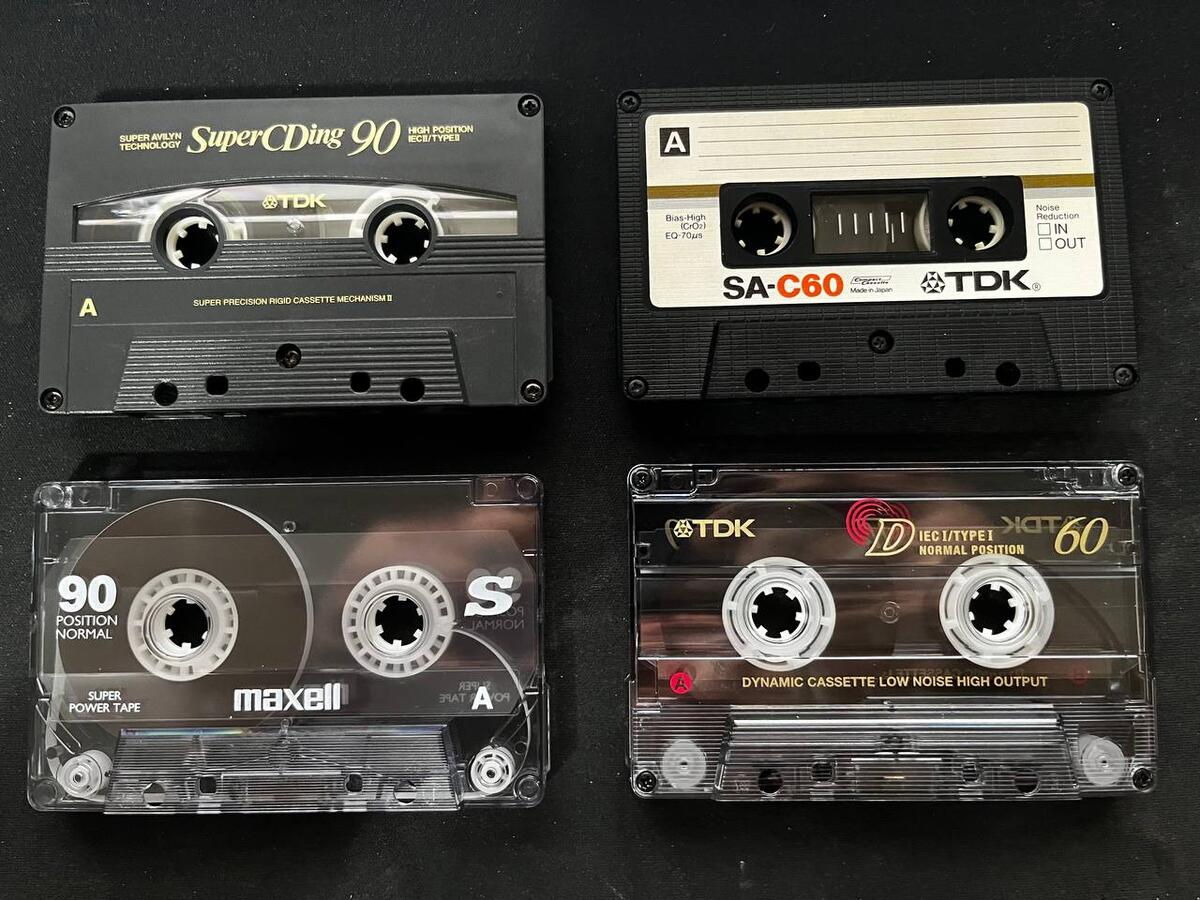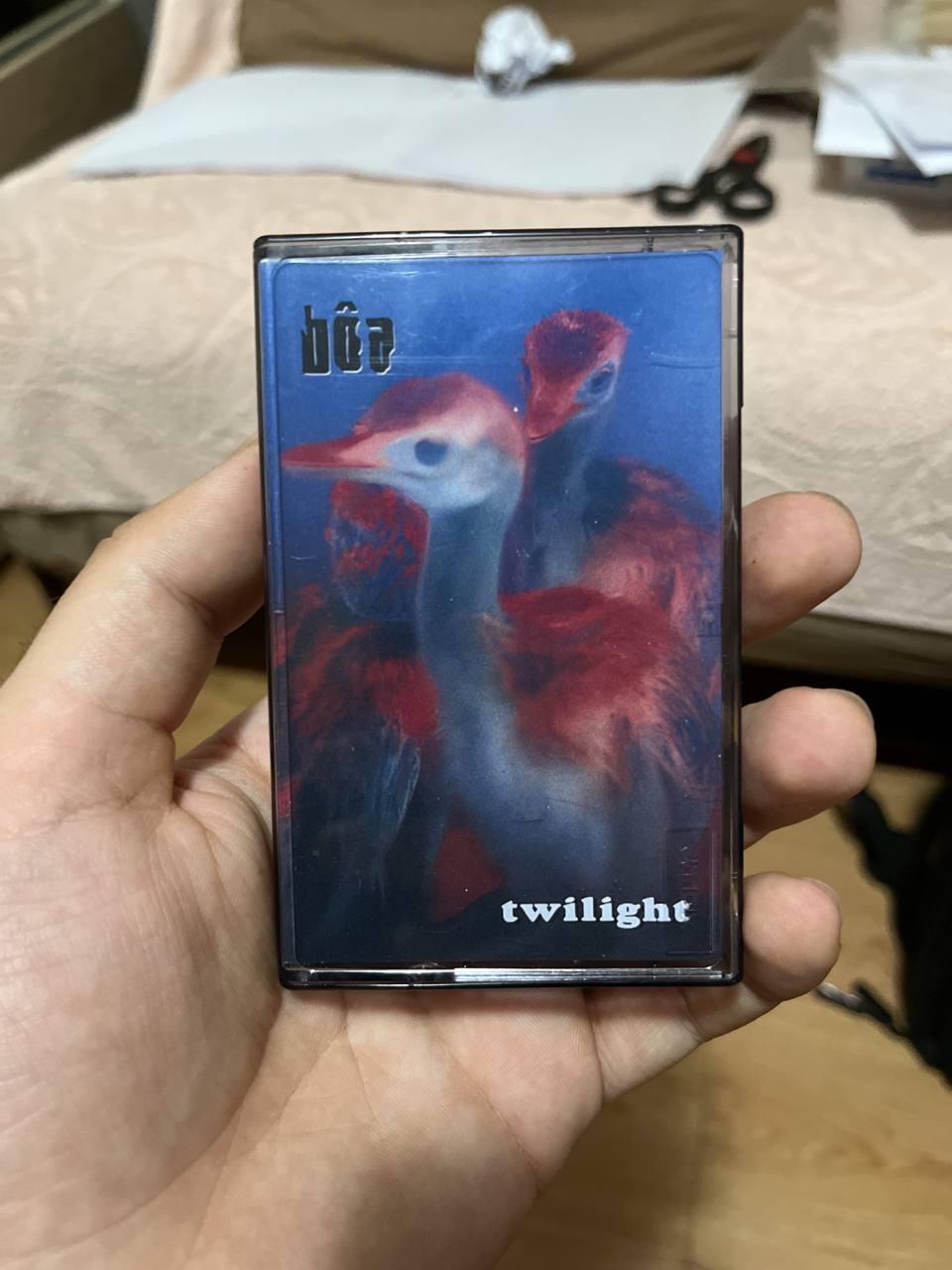Recording cassette tapes in 2023
March 5th 2023 | ~ 6 minute read
Introduction
Ah, cassette tapes... Remember how we used to record music onto them? Well I certainly don't. Actually that would be a lie, I'm old enough to remember using the venerable compact cassette in the early 2000s, but I don't remember ever recording any music onto one. I guess it's not surprising for a five year old? Therefore I had a wonderful little idea. Why don't I make some now, in 2023? Well yes, that would certainly be possible. Just one small problem, I don't own a cassette deck anymore. Go figure!?
The hunt for a cassette deck
Easily enough, all I had to do was get one used off of the local marketplace. I picked one up for a fairly decent price of $35 and connected it to my Hi-Fi setup. I ended up getting a fairly mid-range deck from the mid 1990s, a Sony TC-KE300. It happened to have all the features I cared about.
- 2 heads
- Full logic controls
- Dolby B/C Noise Reduction (With Dolby HX-PRO)
- Automatic tape type detection
- Support for all tape types (I, II, IV)
- Automatic calibration
- Manual record level control
- A digital tape counter
Here's a picture

A more advanced deck would also include Dolby S, 3 heads (for monitoring purposes) and manual bias adjustment, but it is what it is.
Getting cassettes for a decent price
Of course it's now a matter of also getting blank cassette tapes themselves and, if possible, for a decent price. To that end I have a couple of recommendations for you all. Don't buy new old stock if you don't want to pay a premium for anything that isn't a standard Type I ferric tape and especially don't waste your money on sealed Type IV Metal tapes. Instead, buy used cassettes that you can get in lots of 10+ often for what just a single new tape would cost you.
Here's a picture of a few different cassettes I got in such lots

Also, whenever possible try to go for at least a Type II Chrome cassette. Those sound better than the standard ones and are only marginally worse than the cream of the crop, Type IV Metal. And yes, buying used has the drawback of potentially sounding worse than a new cassette, but I honestly can't tell the difference.
Recording onto cassettes, a crash course
Here's a non exhaustive list of guidelines to record your own cassettes.
- Wind your tape past the "lead-in" section to get to the actual recordable area.
- If your deck doesn't support automatic tape type selection, select the correct one manually.
- If your deck supports automatic calibration, do so as each tape, even the ones of the same manufacturer and type has a slightly different formulation.
- Select your recording source be it your PC, TV, CD or even your phone.
- Play your source, the deck will be put to "recording pause" mode allowing you to listen back to it and adjust further settings.
- Set your recording levels to peak around +0 db, or if you're recording onto metal tapes, slightly higher, around +2 db. Never go into the red zone on your level meter, as that will result in audible distortion.
- Rewind your source to the beginning and hit play on your deck, this starts the recording.
- If you have a 3 head deck, monitor the sound as you're recording it.
- Try to minimise "dead space" between sides A-B as much as possible for a more seamless playback experience.
Choosing what to record
This is of course up to you. You can record whatever you like, your favourite albums, make a mixtape or even make audio books. However if you're recording albums for whatever reason I again have some tips.
- Try neatly dividing the album across sides A-B.
- If that's impossible due to the length of the tracks, calculate how long you can make each side to minimise "dead space".
- To that end rearrange the track order a bit if you have to, to find that sweet spot.
- If you must leave some dead space, once you finish recording one side, fast forward it all the way to the end before you record the other.
If you're recording mixtapes however, you have a few different choices. You can record tracks with blank spaces between them or you can try to create a seamless mix. Both have certain advantages. The first approach is much less time consuming as you can just record whatever you want, without having to worry about trying to blend the tracks together in one big, continuous mix. The second approach does require a lot more time, but as stated you can be creative trying to crossfade tracks which certainly creates a unique experience. There's a certain art to creating that perfect mix.
Printing nice labels for your creations
To maximise immersion, you can print your own labels for your recordings. You really have a chance to get creative here, as no matter what you recorded chances are, it was never released on cassette before. If you recorded an album that has a typical square aspect ratio for the artwork, you can have fun trying to design a cassette "J-Card" for it. If you've recorded your own mixtape, the possibilities become endless. If you're so inclined you can draw the artwork yourself or if you lack artistic prowess, you can try blending existing pieces of art together or, my favorite, have Midjourney AI generate one for you. Ok, that last one is cheating, but it's creative, no?
Once you're done creating your beautiful artwork, print it on standard glossy photo paper using a standard CYMK Ink-Jet printer or you can have them printed for you somewhere.
Here's a picture of one of the albums I printed the J-Card for

Why bother though?
I know, in the age of streaming and digital music of all sorts, why bother with the venerable compact cassette in $CURRENT_YEAR? This is indeed a legitimate question with a legitimate answer. Because it's fun, because it brings me joy, because I want to do it, because it's a hobby. I suppose that's reason enough. There's a certain magic to using physical media that streaming just doesn't satisfy, precisely because it doesn't take nearly as much time or effort.
Conclusion
I guess I should conclude this article with words of appreciation for a not so dead audio format that refuses to go away, no matter how niche its use has become. The compact cassette was invented way back in the 1960s. It was never meant to be used for music, but advancements in tape formulation technology made it suitable for more than just dictation, propelling it to become the most popular music format well into the late 1980s when it was finally overtook by another dinosaur, the CD. I fondly remember listening to my dad's tape collection, the first music format I ever heard. To revisit it all these years later was nothing short of astonishingly magical. Thank you, compact cassette, I'll rock with you for years to come.